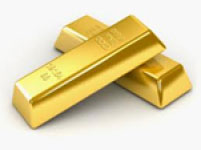In its natural state, pure Gold is a bright yellow colour. Being too soft to be used in jewellery on its own, it is mixed or alloyed with other metals to make it durable and hard-wearing. Alloying gold generates various colours, from white to rose colours. Gold is one of the most malleable metals ever found, which makes it the metal of choice for making jewellery.
18ct yellow gold (stamped 750) is composed of 75% pure gold and 25% other metals, such as zinc, copper and silver. 14ct yellow gold (stamped 14ct) is composed of 58.3% pure gold and 41.7% of other metals. And the 9ct (stamped 9ct) is 37.5% gold and the rest other metals. It is commonly believed that 9ct gold is harder to wear than the 18ct. This, in fact, it is a mistaken belief. The actual percentage of gold content is not the dominant factor which determines how hard the metal is. Rather, it is the type of metals the gold has been alloyed with.
The vast proportion of engagement and gold wedding rings are produced using 18ct yellow gold. The reason behind this is that the proportion of pure gold found in the 18ct is much higher (75%) than the 9ct (37.5%), hence the everlasting rich and shining yellow colour it displays.
